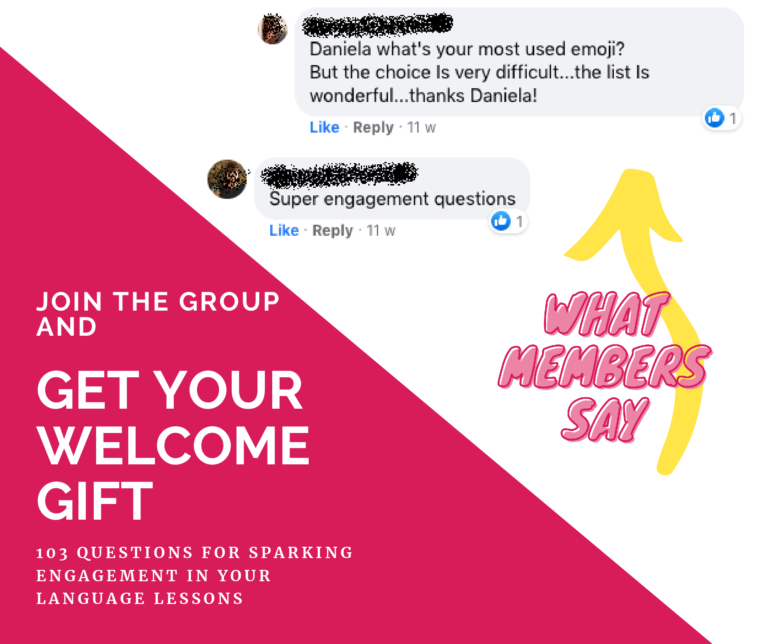
Language acquisition is a process where people naturally absorb new language input and they develop the ability to use those input autonomously, creatively and spontaneously in real situations. Many theories approached the question “what is language acquisition”. Usually they refer to the way children learn their mother tongue. Language acquisition, though, refers also to second and foreign language acquisition. In this article you are going to find answer to the question “what is language acquisition”, as well as to learn about the three strategies for promoting language acquisition in second and foreign language classrooms.
You are going to explore the following questions:
- What is language acquisition?
- What outcome can we expect from language acquisition?
- How can we take our students to language acquisition?
To answer the question “what is language acquisition” I’m going to tap into the research of two giants in the field of language learning: Prof. Stephen Krashen (author of the comprehensible input theory) and Dr. Georgi Lozanov (inventor of Suggestopedia).
What is language acquisition?
When we absorb new language input and that input goes all the way through our long-term memory, that is language acquisition. Once in the long-term memory, we become able to recall the information and to use it spontaneously.
I like to mention Prof. Krashen for explaining how language is acquired. Prof. Krashen says we acquire a language by taking in comprehensible input. Basically, when we understand what we listen to and what we read, although it’s new to us, that means we are absorbing new information which we can understand at some level. Comprehensible input is a subconscious process. Krashen explains it with the following words: “When it’s happening, we don’t know it’s happening. Once it’s happened, we are not aware anything has taken place.”
Similarly, Dr. Lozanov drew similar conclusions. In Suggestopedia students acquire new input through playful activities, aesthetics and art (such as drama and music). They absorb manifold of new input without even realizing they are actually acquiring the target language. From the students’ point of view, the suggestopedic classes are a fun and engaging flow of games and interesting activities, whereas the teaching practice sticks to very structured rules and it belongs to a proper framework.
What outcome can we expect from language acquisition?
Language teachers ought to plan all lessons and courses by taking the question “what is language acquisition” as a starting point.
When they get to facilitate acquisition, the outcome is outstanding:
- Students seem to absorb the target language as they were in a learning flow
- Students take part in the classroom activities spontaneously
- Students speak creatively (although they may be limited by their actual skills level) and they try their best to communicate
- Students are willing to deliver a message and they want to speak or to write in the target language, rather than avoiding that because of the mistakes they may make
- Student enjoy learning the target language!
Pretty cool, right?
How can we take our students to language acquisition?
In my teachers training courses I teach language teachers to embody drama and the suggestopedic principles into their language practice. The goal is to promote acquisition.
The essence of the framework I teach them refers to three, core strategies:
- What types of exercises and activities we propose in the classroom
- How we communicate with the students (how we get them involved in the activities, how we give feedback, etc.)
- How we design and plan the training experience.
Let’s have a closer look at the three strategies.
What types of exercises and activities should we propose in order to facilitate language acquisition?
This aspect relates to what types of activities and exercises we choose for the lessons. In order to get the students involved, we need to turn the lessons into engaging learning experiences. Games, drama and the use of art play a fundamental role in this. When students feel relaxed and involved, they become far less reluctant to learning.
How should we communicate with the students to take them to language acquisition?
We should use a precise communication method. This relates to the way we communicate with our students at every moment of the learning experience. The seven suggestopedic principles offer clear guidelines about this. I believe the communication approach shouldn’t be something left to pure intuition and experience. On the contrary, it refers to clear guidelines and a precise method for reinforcing the relationship teacher-students based on trust.
How should we design and plan the training experience to take the students to language acquisition?
We design lessons and courses within a precise methodological framework that facilitates the acquisition process: this relates to lesson/course planning according to the principles of the acquisition unit. The acquisition unit is a solid grid that paces the natural process of acquisition. Find out more about language training designing and the acquisition unit in this article.
Given an overview on the three strategies, I know sometimes it’s difficult to design lessons and courses that really take to language acquisition. Sometimes, although you may have a lot of experience and loads of good ideas, you just find it tricky to pour all you know into a good lesson plan.
The good news is that I can help you with that!
I invite you to book a FREE coaching session with me, where we can go through a lesson plan or a course plan you need to design. You can ask me any questions and I’ll help you to outline your plan:

Book a FREE 1:1 online coaching session with me
◤CLICK HERE◢
You will walk away with:
- Lesson/course goals set
- A clear vision of the framework for your lesson/course
- The general outline of the lesson/course for taking your students to acquisition, to the expected results and for boosting their engagement.
Wrapping up
Every time I’m asked “what is language acquisition” and “how can we promote it”, I like to provide language teachers with a very simple framework for creating engaging and effective lessons that take students to results.
First of all, I suggest to use engaging activities (such as games and drama) to facilitate acquisition. This aspect is about “what” exercises, activities and methods to choose for the lessons.
Secondly, we want to make sure the lessons flow smoothly and that everyone in the group is onboard thanks to a specific approach to communication. Although teachers have their personal communicative style, the communicative approach should be a common denominator to all teachers. The way we walk the students through the activities, the way we address their questions, reactions and concerns, the way we give feedback, etc.: all this refers to very clear guidelines.
Ultimately, what tides everything (exercises, games, drama and guidelines on the communication approach) together is training designing according to the principles of the Acquisition Unit.
Curious to see how to implement the three strategies you learned about in this article?
Book a FREE session with me and I’ll be happy to walk you through the process for designing a lesson/course your students will love:

Book a FREE 1:1 online coaching session with me
◤CLICK HERE◢
You will walk away with:
- Lesson/course goals set
- A clear vision of the framework for your lesson/course
- The general outline of the lesson/course for taking your students to acquisition, to the expected results and for boosting their engagement.
Want more support?
Join the Facebook group Independent Language Teachers Collective to get daily advice, tons of free training and to branch out with other independent language teachers like you!
ALSO…
Available only for the Collective members: free list 103 question for sparking engagement in your language lessons.
This is what members say about the freebie:

Join in the Collective and grab your welcome gift:


